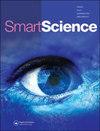Preparation and characterization of Cu-formate heterogeneous catalysts from ash of gelam wood (Melaleuca leucadendron) for glycerol oxidation
IF 1.4
Q2 MULTIDISCIPLINARY SCIENCES
引用次数: 0
Abstract
ABSTRACT The conversion of glycerol into high-value-added chemicals has begun to take the attention of researchers in recent years. Approximately 10% (w/w) of glycerol is produced as a by-product in the manufacture of biodiesel. Through a catalytic oxidation reaction, glycerol can be converted to formic acid. In this study, glycerol was converted to formic acid as the main product by involving a heterogeneous catalyst of Cu-formate which was embedded in the ash of gelam wood (Melaleuca leucadendron). The catalyst was made with variations in the ratio of Cu-formate to gelam wood ash (GWA) = 0.125; 0.25; 0.50; and 0.75 (w/w). The catalysts were characterized by FTIR, XRD, SEM-EDX, and SAA. The Cu-formate/GWA catalyst was then tested for its activity on glycerol oxidation with various catalyst ratios, amount of catalyst (0.5–3% (w/w)), reaction temperature (50°−90°C), and reaction time (1–11 hours). The results showed that the yield of the products increased with increase in catalyst ratio. The optimal amount of catalyst was used at a concentration of 2% (w/w), a reaction temperature of 70°C, and a reaction time of 3 hours. GRAPHICAL ABSTRACT用白杨灰制备甲酸铜非均相甘油氧化催化剂及表征
甘油转化为高附加值化学品的研究近年来开始受到研究人员的关注。大约10% (w/w)的甘油是作为生产生物柴油的副产品产生的。通过催化氧化反应,甘油可转化为甲酸。在本研究中,将甘油作为主要产物转化为甲酸,将甲酸铜作为多相催化剂嵌入到白杨木(千层木)的灰分中。在甲酸铜与明胶木灰(GWA)之比= 0.125的条件下制备催化剂;0.25;0.50;0.75 (w/w)。采用FTIR、XRD、SEM-EDX和SAA对催化剂进行了表征。然后测试了甲酸铜/GWA催化剂在不同催化剂配比、催化剂用量(0.5-3% (w/w))、反应温度(50°- 90°C)和反应时间(1-11小时)下对甘油氧化的活性。结果表明,随着催化剂配比的增加,产物收率提高。催化剂的最佳用量为浓度2% (w/w),反应温度70℃,反应时间3小时。图形抽象
本文章由计算机程序翻译,如有差异,请以英文原文为准。
求助全文
约1分钟内获得全文
求助全文
来源期刊

Smart Science
Engineering-Engineering (all)
CiteScore
4.70
自引率
4.30%
发文量
21
期刊介绍:
Smart Science (ISSN 2308-0477) is an international, peer-reviewed journal that publishes significant original scientific researches, and reviews and analyses of current research and science policy. We welcome submissions of high quality papers from all fields of science and from any source. Articles of an interdisciplinary nature are particularly welcomed. Smart Science aims to be among the top multidisciplinary journals covering a broad spectrum of smart topics in the fields of materials science, chemistry, physics, engineering, medicine, and biology. Smart Science is currently focusing on the topics of Smart Manufacturing (CPS, IoT and AI) for Industry 4.0, Smart Energy and Smart Chemistry and Materials. Other specific research areas covered by the journal include, but are not limited to: 1. Smart Science in the Future 2. Smart Manufacturing: -Cyber-Physical System (CPS) -Internet of Things (IoT) and Internet of Brain (IoB) -Artificial Intelligence -Smart Computing -Smart Design/Machine -Smart Sensing -Smart Information and Networks 3. Smart Energy and Thermal/Fluidic Science 4. Smart Chemistry and Materials
 求助内容:
求助内容: 应助结果提醒方式:
应助结果提醒方式:


